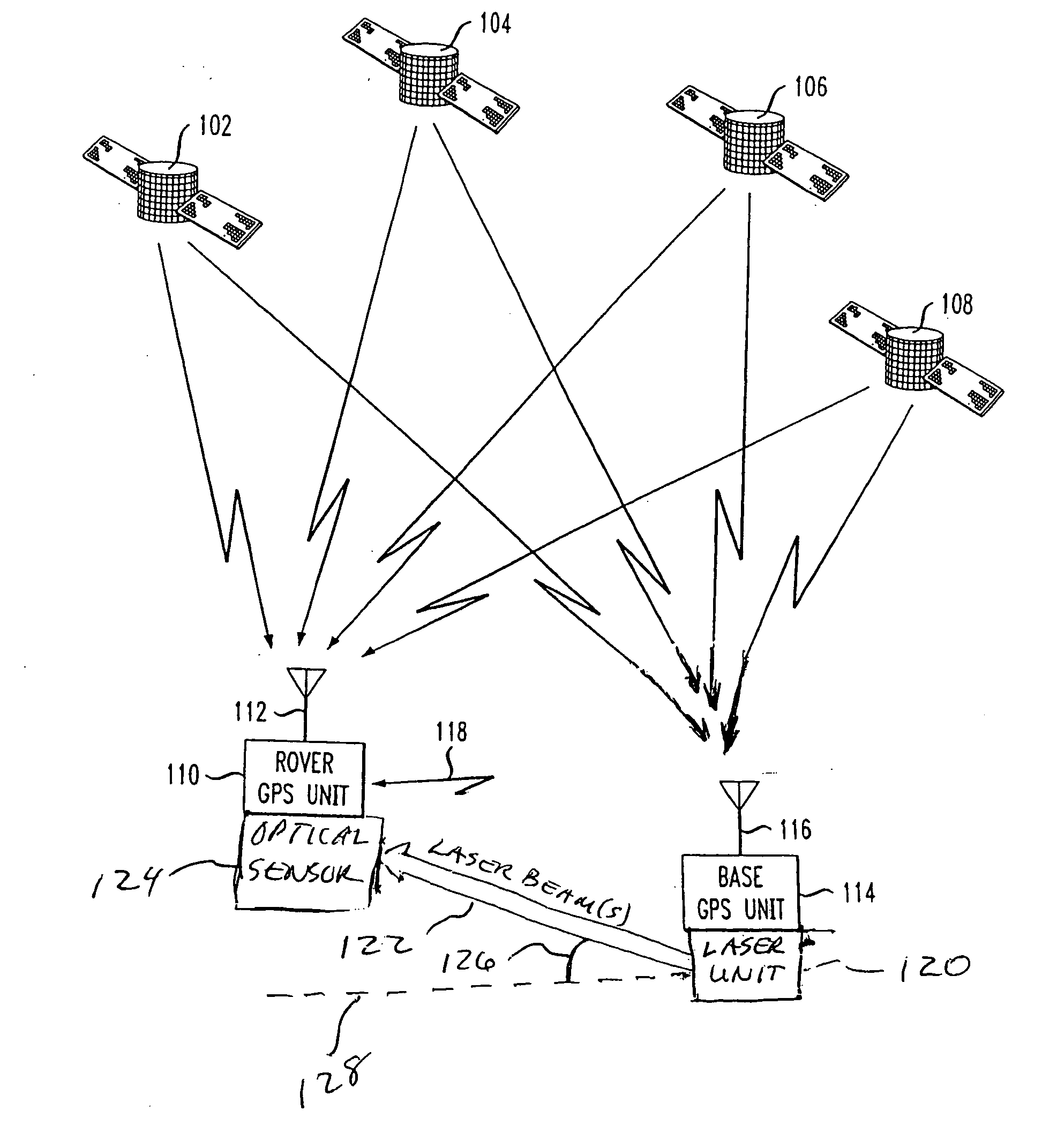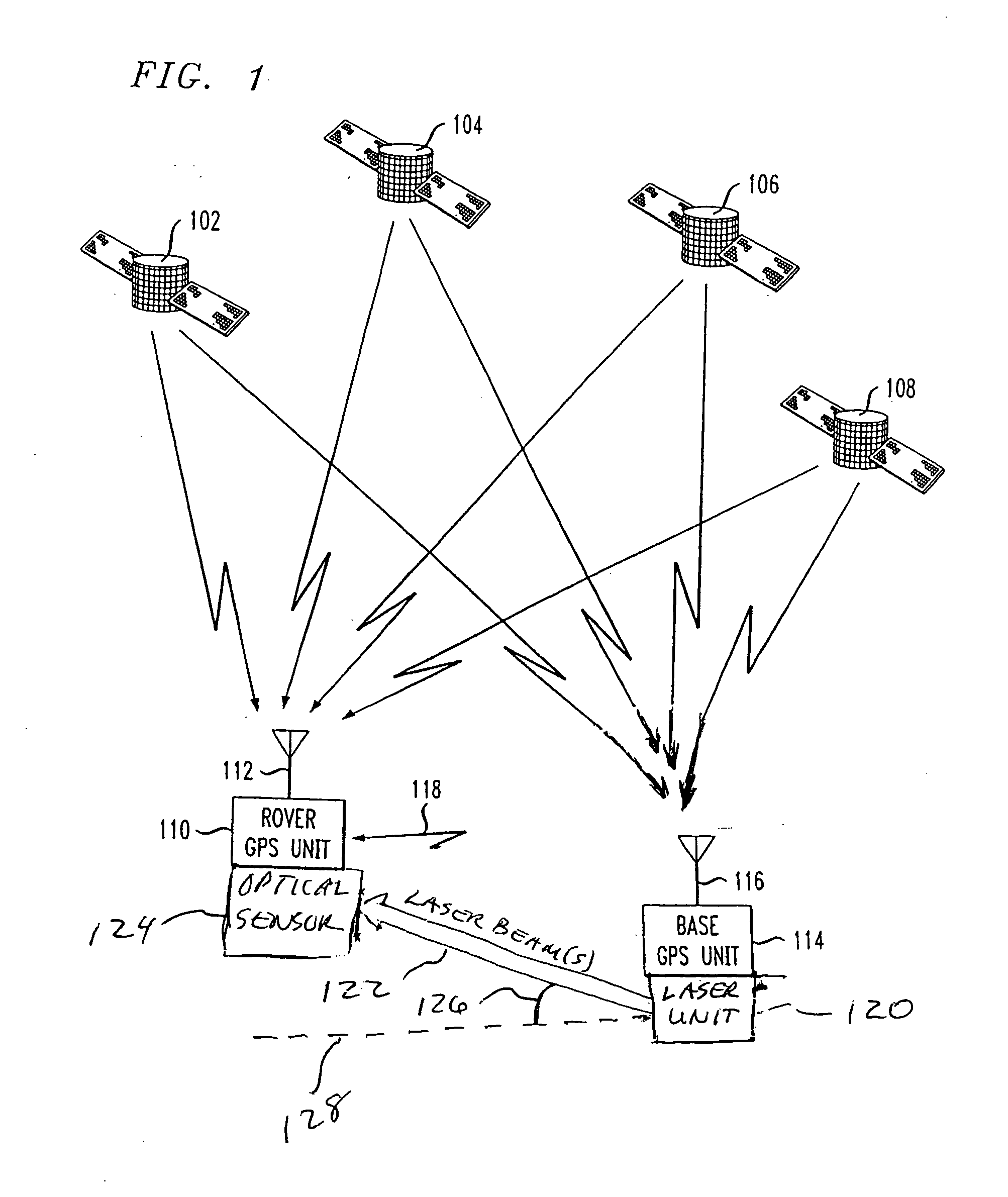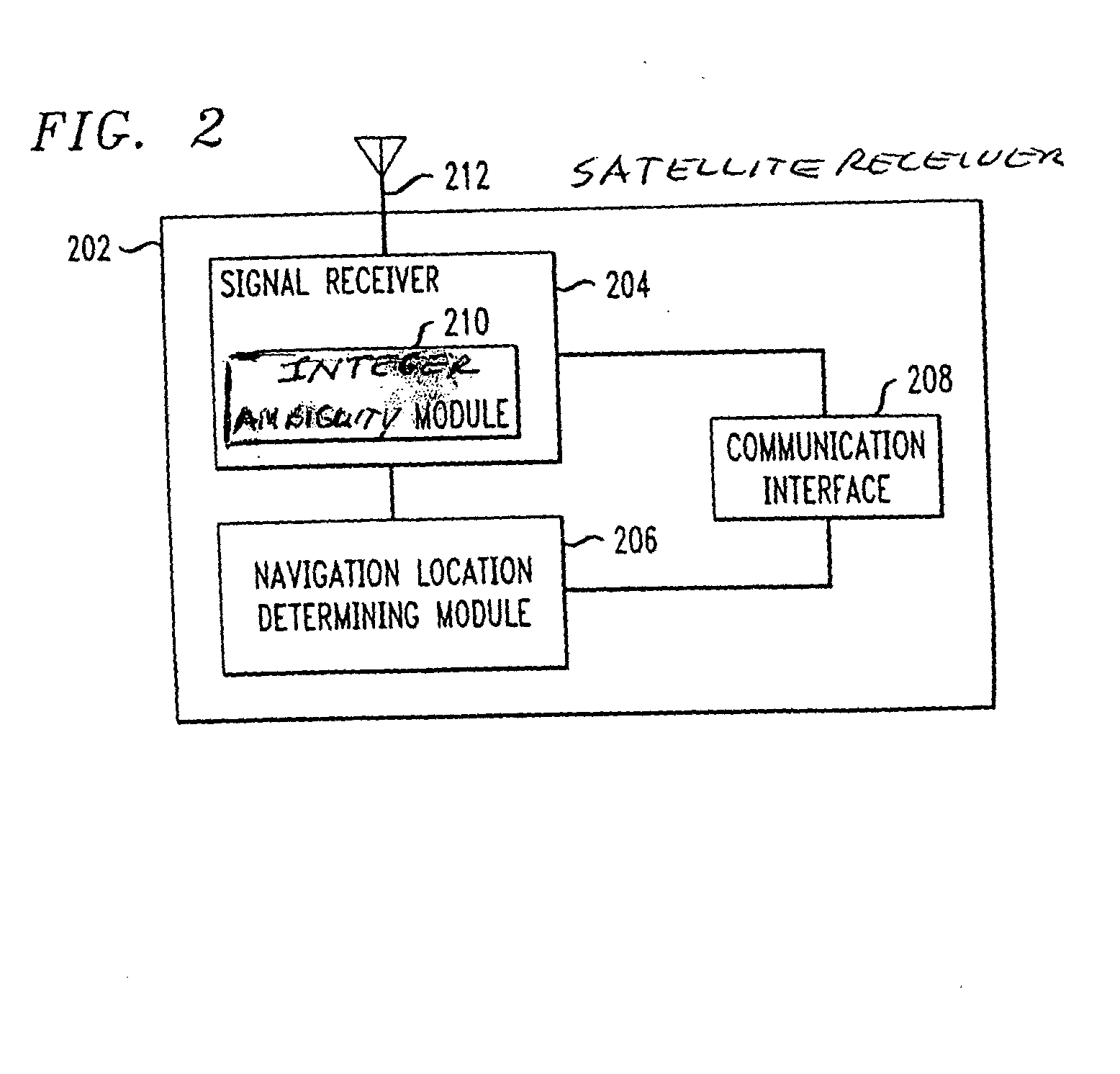Estimation and resolution of carrier wave ambiguities in a position navigation system
a position navigation system and carrier wave technology, applied in wave based measurement systems, direction/deviation determining electromagnetic systems, instruments, etc., can solve problems such as the inability to measure the integer number of cycles of incoming satellite signals, the difference in the phase delay of a carrier signal received by the base and rover receivers may substantially exceed one cycle, and the resolution of ambiguity problems, to achieve the effect of improving the accuracy of determination
- Summary
- Abstract
- Description
- Claims
- Application Information
AI Technical Summary
Benefits of technology
Problems solved by technology
Method used
Image
Examples
Embodiment Construction
[0032] A typical exemplary position navigation system for implementing the features of the invention includes multiple satellites each radiating signals in two frequency bands: the L1 band and the L2 band. Two carrier signals are simultaneously transmitted in the L1-band; both carrier signals have the same frequency, but are shifted in phase by π / 2 (90°). The first L1 carrier signal is modulated by the clear acquisition C / A-code signal and the second L1 carrier signal is modulated by the precision P-code signal. One carrier signal is transmitted in the L2 band, and uses a different frequency than the L1 carrier signals. The L2 carrier signal is modulated by the same P-code signal used to modulate the second L1 carrier signal. These carrier frequencies are between 1 GHz and 2 GHz in value. Each C / A-code signal and P-code signal comprises a repeating sequence of segments, or “chips”, where each chip is of a predetermined time period and has a pre-selected value, which is either +1 or ...
PUM
 Login to View More
Login to View More Abstract
Description
Claims
Application Information
 Login to View More
Login to View More - R&D
- Intellectual Property
- Life Sciences
- Materials
- Tech Scout
- Unparalleled Data Quality
- Higher Quality Content
- 60% Fewer Hallucinations
Browse by: Latest US Patents, China's latest patents, Technical Efficacy Thesaurus, Application Domain, Technology Topic, Popular Technical Reports.
© 2025 PatSnap. All rights reserved.Legal|Privacy policy|Modern Slavery Act Transparency Statement|Sitemap|About US| Contact US: help@patsnap.com



